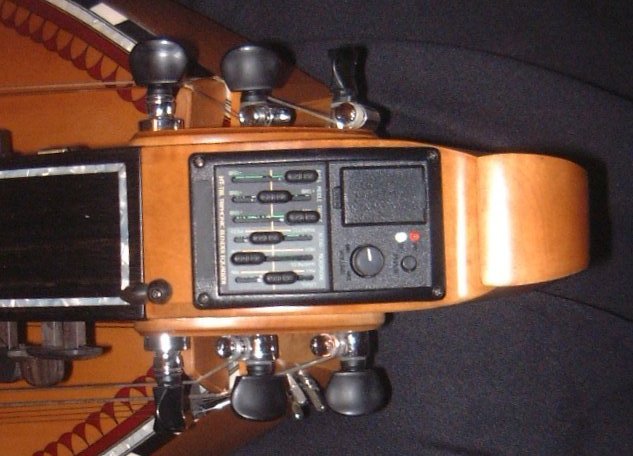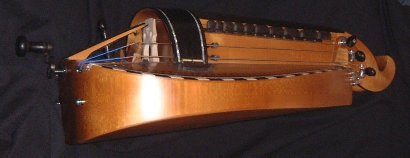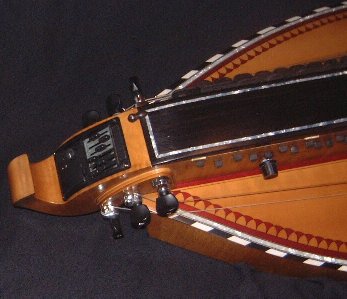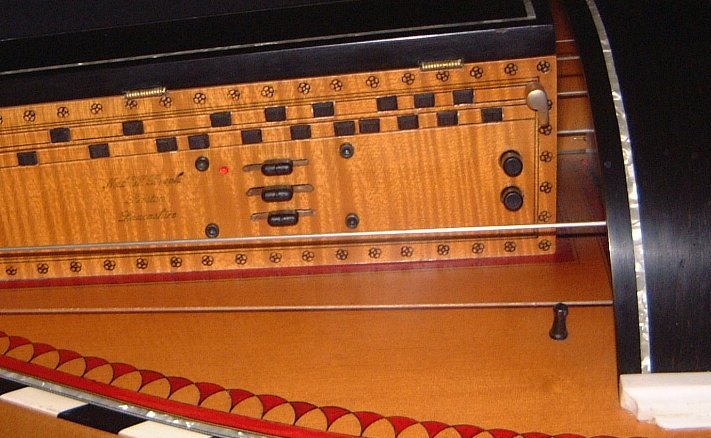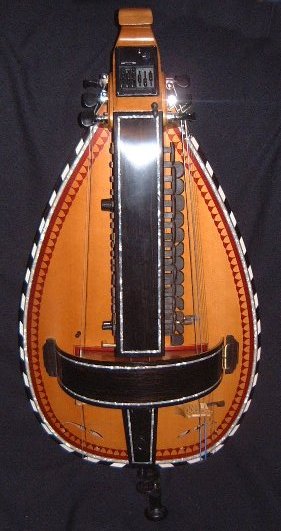
I have designed this instrument around the "Artec triphonic" active unit which was designed for guitar but fills every requirement for the hurdy-gurdy.
Essentially, the unit comprises two mixable piezo inputs with three band eq and an interior microphone with brightness control which can be added to the mix for greater acoustic accuracy. There are then master volume and phase reversal controls.
The unit has a standard jack output and an xlr socket which can provide phantom power as an alternative to the battery. Both outputs can be used together - typically one through effects and one clean signal.
